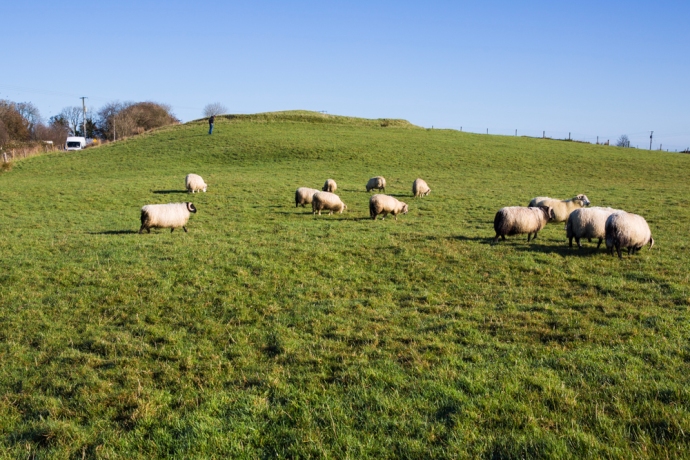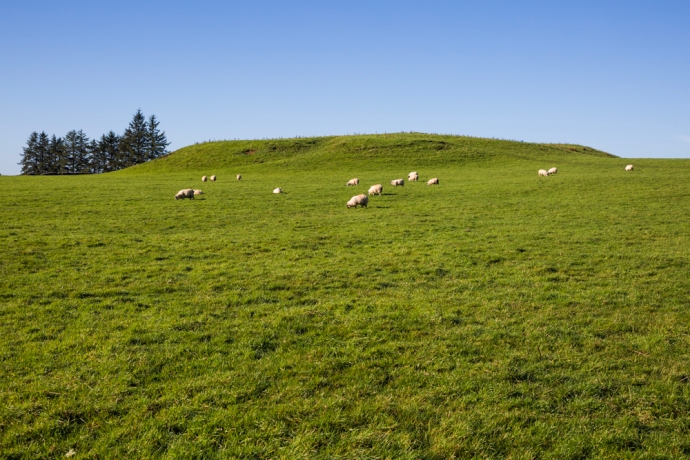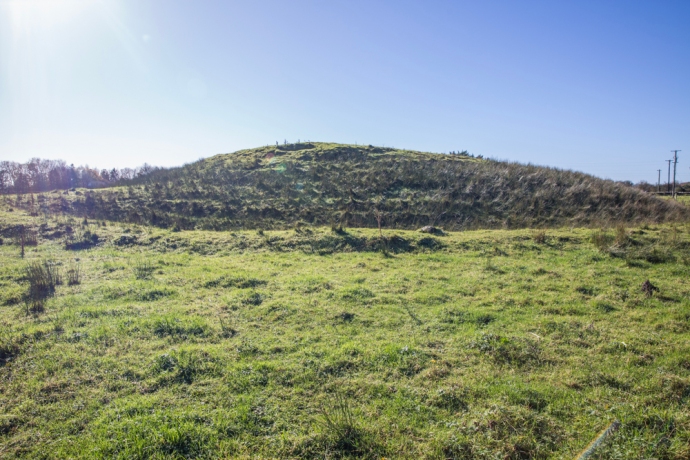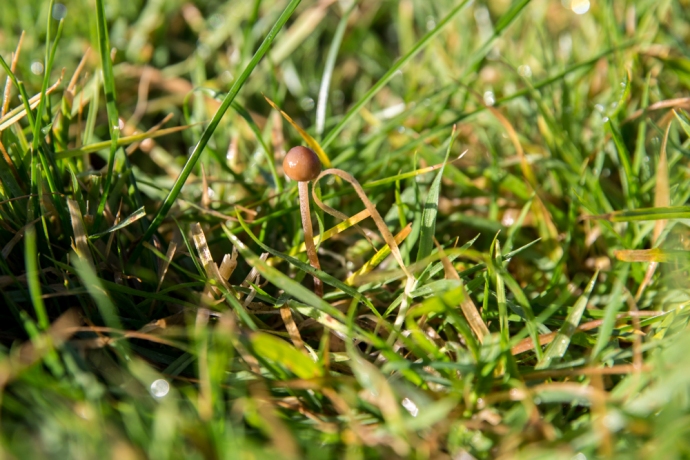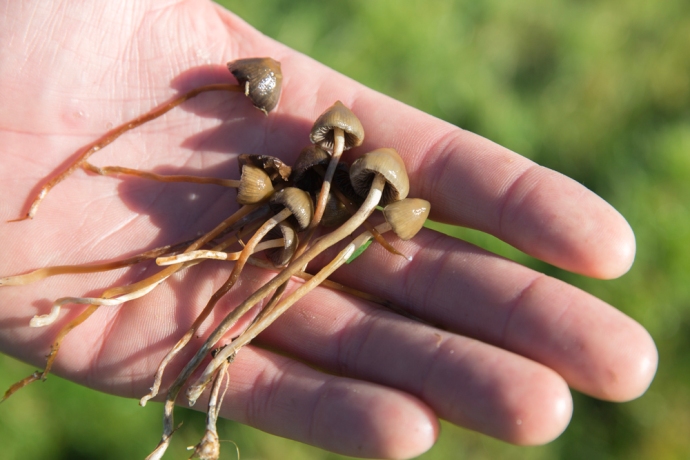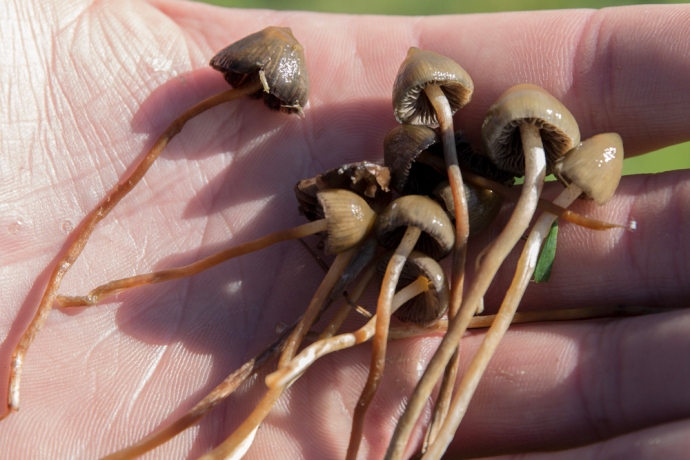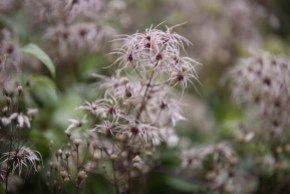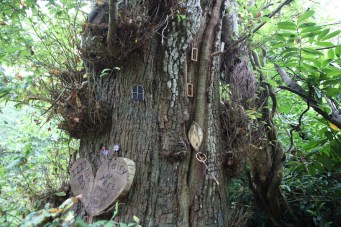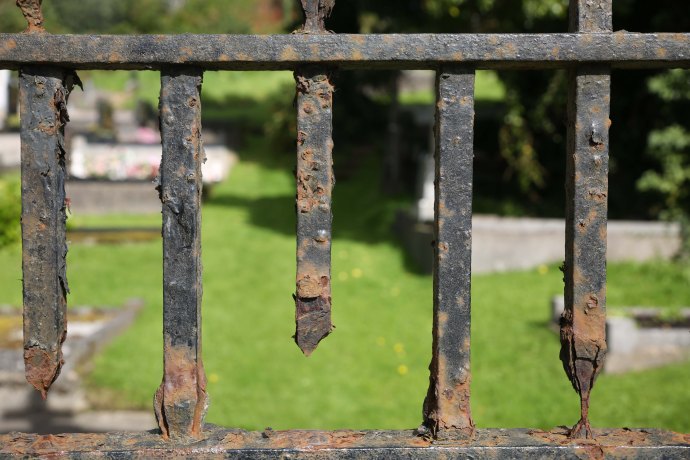I love when I visit a place for one reason (usually music) and discover something totally unexpected. Such was the case with Strokestown in Co Roscommon. I had no reason to expect anything other than long days and nights in one or many of the quaint pubs playing music and sampling the odd Jamesons.
It turns out Strokestown, a planned town, has a pivotal and fascinating history. In the centre of the town is Strokestown Park House, the ancestral home of the Mahon family.

Strokestown Park House
You can’t help but notice the wide avenue that leads to the narrow gate to the grounds. Aside from O’Connell Street in Dublin, it is the widest street in Ireland. One gets the impression that lined as it is with imposing buildings and Georgian terraces it was meant to create an aura of wealth and prosperity befitting the status of the British landowner; so as they drove the carriage down the avenue his friends would be suitably impressed. The true state of the people hidden in the side streets.

The gateway to Strokestown House in the distance.

Public buildings. There’s room to park a bus rear to kerb.
But the family and the name Strokestown has a darker side. It is now mostly remembered for its connection to the Famine, evictions and land clearances. That story is told in the Famine Museum attached to the house (which is itself now a museum) and is an extraordinary one.
The house is a time capsule. The Georgian Palladian style of its architecture reflects the obsession with symmetry at the time and the desire to make the house look bigger than it was. The two wings were largely cosmetic with stables and storage and services. All the living areas were in the main two story house.

Georgian Palladian architecture. The central building is the main residence. To the left are the kitchen and storerooms and to the right the stables.
Built in 1660 the original owner, Captain Nicholas Mahon, was given lands as reward for his exploits with the forces of Cromwell in taking Ireland. The family did well and by the 1840s had an estate of 11,000 acres. An arranged marriage to another prominent British family, the Pakenhams, led to a combined land holding of 30,000 acres spread through Roscommon,.
During the 1700s and into the 1800s Strokestown prospered. However in the1840s when the potato blight and the consequent famine struck hard in Roscommon, the then owner Denis Mahon implemented a programme of large scale evictions.
In one year alone (1847) he evicted 3,000 people. Though the excuse for the land clearance was the inability of the Irish tenants to pay rent it seemed to be part of a grander scheme. Immediate steps were taken to advertise the land thus made available in places like Scotland, where presumably Protestant tenants would be more reliable. The clearances were accomplished largely by “assisted emigration” in particular to Canada. As many as 50% of the passengers died amid extraordinary cruelty on these Famine ships mostly through cholera and typhoid and this prompted outrage. It climaxed in the murder of Denis Mahon at the end of 1847. The culprits, presumed to be disaffected tenants weren’t identified, but it led to swift retribution against any family that might have had a remote connection as a conspirator. Much material that relates to this period is on display in the Museum. In particular there are many original letters and documents which illustrate the plight of the people and the heartlessness of the landlords.

A list of tenants recommended for relief work, 1846. The notes in blue provide comments as to whether the person had made an effort to pay their rent. They were favoured.

A petition from Kilbeg tenants to the owners requesting whether they will be given assisted immigration. Tenants were keen to go to foreign lands but many never made it.

A Notice to Quit on Widow Mary Campbell requesting her to vacate the premises.

A Civil Bill used where rent was over twelve months in arrears. The tenants’ annual rent was £11 5s and their arrears were £16. They were to appear in court to be evicted.

A receipt for £2 to Margaret Brice on surrendering her house, land and manure upon eviction. Note signed with her mark, an x
Following the joining with the Pakenhams their money enabled the family to survive and prosper into the twentieth century. The last remaining resident however was Olive Pakenham-Mahon who lived in the house until 1981.
She decided in 1979 to move to a nursing home and sold the house and lands to local businessman Jim Callelly. He just wanted the land but one day he visited the basement of his newly acquired house and discovered a treasure trove of historical documents that spelt out in intimate detail the story of the house and the evictions. This prompted him to retain the house, restore it and set up a museum based on this archive. And thank God he did.
The house now is furnished exactly as Olive left it. Many of the original furniture and artefacts remain but a lot were sold off to enable her to survive. Olive lived in one room by the end (the Drawing Room) and the rest of the house was essentially abandoned.

The Drawing Room
Visitors are now able to tour the house. What I enjoyed is that lived-in feel. Peeling wallpaper, organised clutter. Pictures exactly where she had left them. Monogramed personal items lying around. A toy room with original toys used by her children. A nursery with original clothes hanging behind the door. A classroom. A massive and elegant dining room.
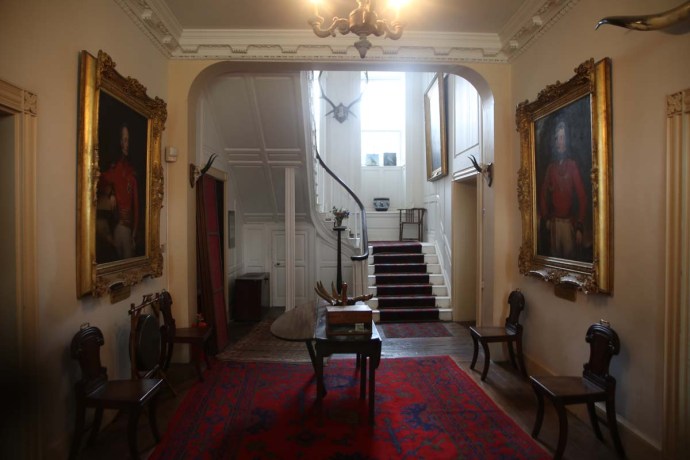
Entrance foyer

The Master’s bedroom

The Lady’s bedroom

The Nursery

The schoolroom

The toyroom

The Dining Room

Monogramed bag

Child’s christening dress

The first telephone

A dictation test
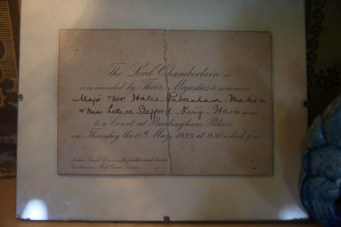
An Invitation to the Ball
There is an amazing kitchen with original stoves, furniture and kitchenware. Our guide related the story that Olive had decided the kitchen was too large and wanted it demolished and a smaller modern kitchen built. The architect was very reticent and came up with a scheme with false walls and ceilings and modern appliances. The original kitchen was preserved behind these walls. Jim Callelly had heard a rumor of this and dismantled it to reveal a treasure frozen in time. Everything was in place and untouched.

The old Kitchen with its massive range


Beautiful original cast iron cooking range


Original Strokestown jug
The library is also impressive. A chippendale bookcase said to be one of the best in Ireland. A pecctacular Grandfather clock. Beautiful globes. Certaily a life style very different to that outside these walls. A classic retreat for the males in the house as was the custom.

The Library

Original 17th Century wallpaper lines the walls of the Library

Rare Irish Chippendale bookcase in the Library
Many magnificent paintings adorn the walls. One is of an ancestral relative, General Pakenham who led the British Army in the Famous Battle of New Orleans. We all remember the history as told by Johnny Horton in his 1959 song
In 1814 we took a little trip
Along with Colonel Jackson down the mighty Mississip.
We took a little bacon and we took a little beans
And caught the British running in the town on New Orleans……..
We fired our guns and the British kept a comin’ …..
You know the rest. The poor General did not survive but was regarded as a bit of a hero back home.

Portrait of General Edward Packenham hanging in the Foyer
Unfortunately as was the case with many Anglo-Irish families when they came upon hard times many paintings and treasures had to be sold. We are reminded of this when we see the faded areas of the original 17th century wallpaper where these paintings used to hang.

Walls of the Dining Room showing faded areas outlining where original pictures hung.
One such painting was a priceless portrait by Bernardi Strozzi of the acclaimed Cremona composer Monteverdi. The portrait was painted in c1630 and was sold by Olive for £2,000. A somewhat amateurish copy hangs now in the Drawing Room in its placewhile the original was returned to Venice.

Original painting of Monteverdi by Bernardo Strozzi once hung in the Drawing Room

Copy of Strozzi paintig now in Drawing Room
An intriguing feature of the house is the Servant’s tunnel. Entered from behind the stables it heads under the house exiting at the back door of he kitchen. Built to ensure deliveries and movement of servants took place with no interaction with the house, it is easily accessed today.

Servants’ tunnel under the house

Entrance to the tunnel
Adjacent to the house is a restored walled garden. A large walled garden of around 4 acres. After a ten year restoration it was opened to the public in 1997 and many of the original features of this pleasure garden have been retained. There is a croquet lawn and a Summer House, a Lawn Tennis court, a beautiful lily pond, impressive herbaceous borders (the longest in Ireland), a formal rose garden, beautiful manicured hedges and a pergola. lawns and wildflower areas. I loved it. But as with the Vandeleur Garden in Clare which I wrote about in a previous blog, the cruel history of the famine sits uneasily with the beauty and bucolic pleasures of this garden.

Herbaceous borders line the walls

There are formal and informal pathways

Croquet Lawn and Summer House

Detail of Summer house with Autumn foliage

Beautiful ornamental lily pond

Secluded pathways

Perfectly manicured hedges

Numerous hidden spaces lie behind hedges
Another treasure of the estate is the Woodland. There is a circular walk through this leafy mossy retreat with huge oak and beech trees and thick undergrowth. It was first planted in the early 1700’s by Thomas Mahon and some of the original trees still exist. During the 1800’s, to increase the pleasure of the shoot, laurels were planted creating a thick undergrowth. Eventually it took over but it was sensitively restored in 2011. The fairies have gone a little overboard though and seem to have occupied nearly every tree.





When old chairs become an art installation.
Truly the house, the museum, the garden and the woodland will keep you occupied for four or five hours. They will be four or five hours well spent.
